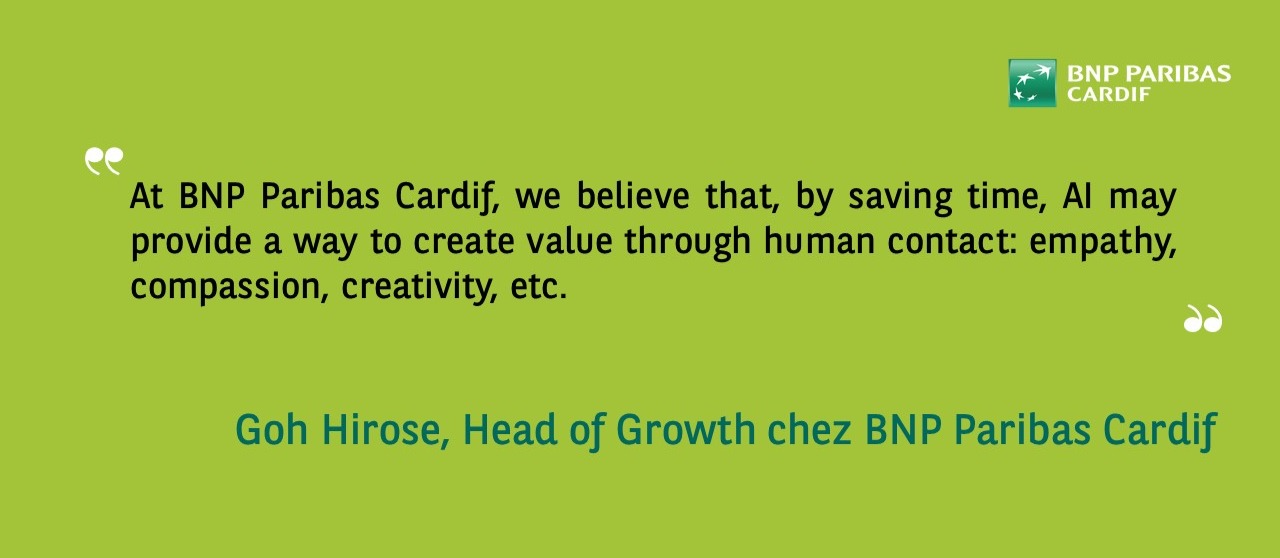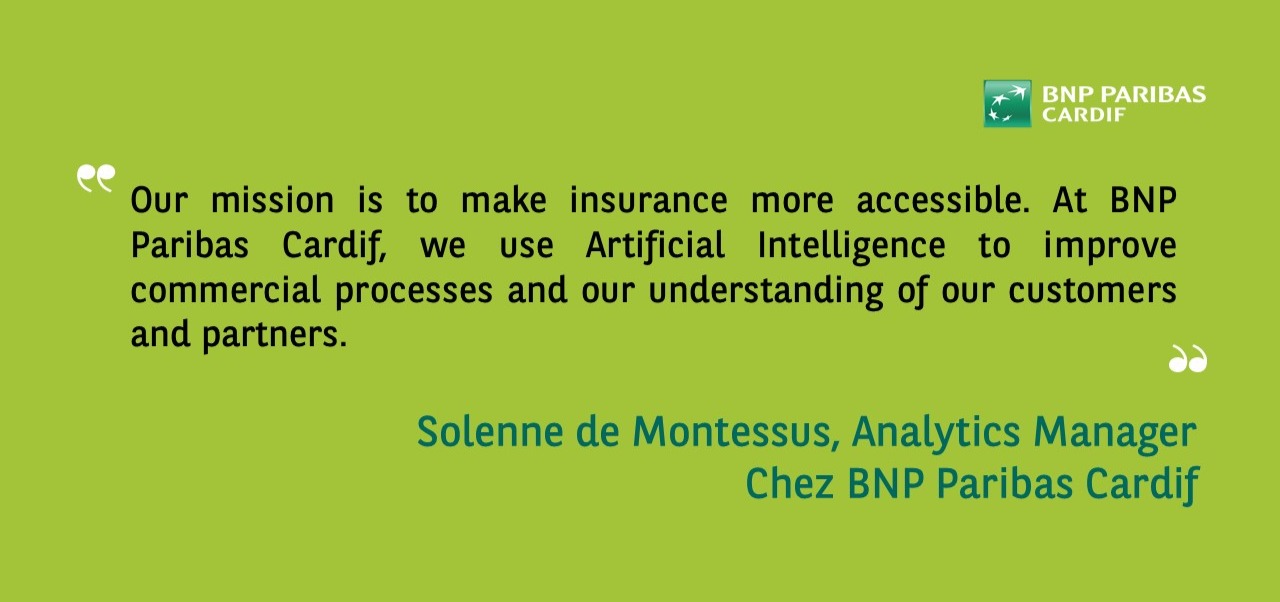Making insurance more accessible with AI
BNP Paribas Cardif is committed to making insurance more accessible through the use of artificial intelligence (AI). AI is more than just a technological tool; it acts as a lever to improve commercial processes and our understanding of our customers and partners.
An AI system uses statistics to complete simple and repetitive human tasks such as driving a car or making easy recurring decisions. These systems are incapable of creativity or empathy, but they can help people understand trends and uncover new ideas.

A controlled technology
AI may be daunting. In particular, some worry it will become autonomous and operate outside of its defined framework. Safeguards are in place, however, to control its actions and conduct.
AI relies on a set of parameters predefined by humans.
« Humans need to supply the algorithms with examples so that the system can learn. For example, in order to recognize a cat photo, you need to supply it with several photos of cats for it to finally be able to recognize the animal.», according to Solenne de Montessus, Analytics Manager chez BNP Paribas Cardif.
3 potential applications for artificial intelligence (AI) in insurance
This technology has proven very useful, including in the insurance industry. AI is a game-changer in three key areas:
- Streamlining the customer journey. AI helps improve the user experience and limit costs by automating a number of processes. This helps provide a more responsive, more effective and higher quality service to customers and partners.
- Optimising sales channels. We can also offer AI solutions to our partners to reach new customers while retaining existing clients.
- Reducing onerous work conditions. For legal teams who need to manage several resources, BNP Paribas Cardif implemented, among other things, an ad hoc research system that enables them to easily find the most relevant documents and provides features to facilitate their research. AI can take over the more repetitive and time-consuming tasks, so employees are free to focus on more high-value-added priorities and work more efficiently.
Saving time to encourage exchange
AI helps boost human productivity but is merely an aide for daily operations. With regard to claims management, human contact is vital for communicating the empathy our clients need.

Increasing value for the customer
Thanks to AI, the insurer provides value to the customer, who can use his or her insurance policy in other ways without having to wait for an incident to occur.
« As an innovative company, we share a vision and values that guide all of our technological advancements to ensure our products provide the best possible protection to our customers while also making them more accessible.», according to Goh Hirose, Head of Growth at BNP Paribas Cardif.
One such example is at BNP Paribas Cardif in Latin America, where our customers can now receive personalised advice via AI. It offers them coaching to enhance their CV or online courses included in their contract, to help them maintain their employability, while simultaneously offering them financial protection in the case of unemployment.
For inclusive and protective AI
AI is showing no signs of slowing down in terms of its future development. To keep up with this trend, BNP Paribas Cardif has adopted an inclusive and protective approach to implementing AI.

Listen to the full podcast here and discover how AI is making insurance more accessible